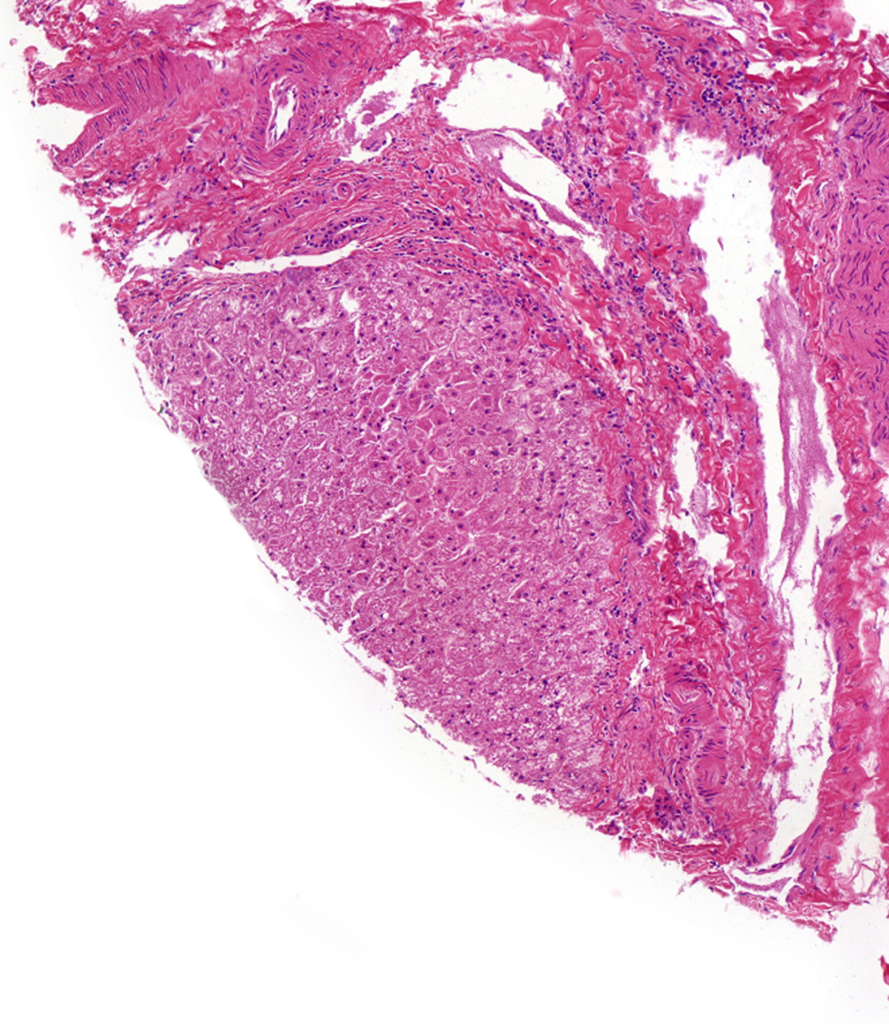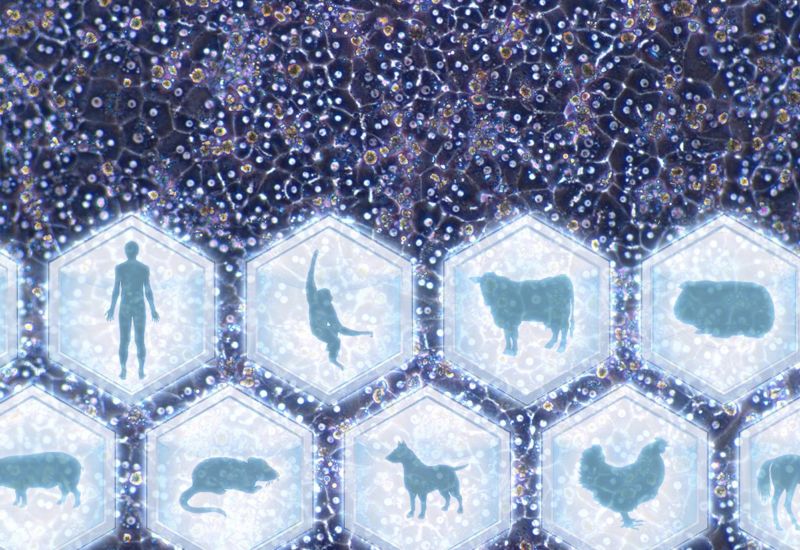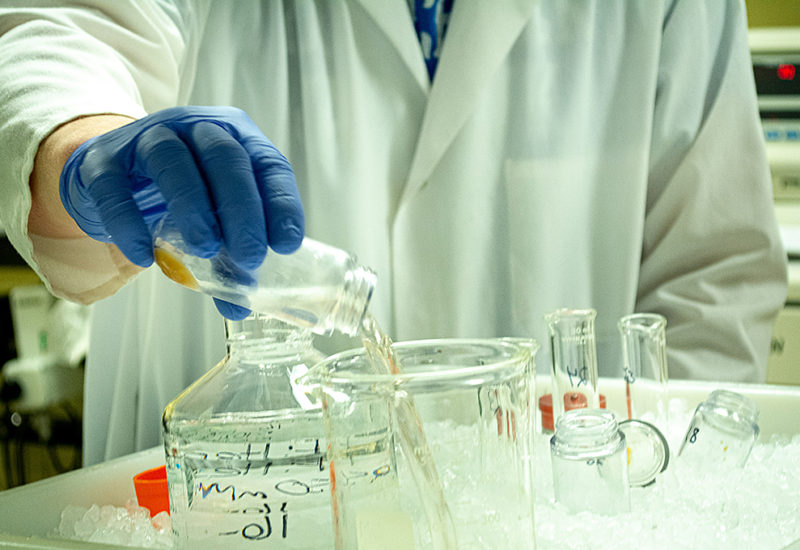Subcellular fractions, such as microsomes, S9, and cytosol from animals are test systems used in drug development to predict hepatic and extrahepatic metabolism of drug compounds in Humans, as part of a compound’s ADME (absorption, distribution, metabolism, and excretion) profile.

Animal Subcellular Fractions
Microsomes contain the highest concentration of many important drug-metabolizing enzymes including cytochrome P450 (CYP) and UDP-glucuronosyltransferase (UGT) enzymes. S9 fractions contain a mixture of cytosolic and microsomal enzymes, which express a wide variety of phase I and phase II enzymes and are recommended for many different drug metabolism studies and pharmacokinetic studies. Cytosolic fractions contain many unique drug-metabolizing enzymes that are not enriched in microsomes and are a recommended test system for evaluating soluble phase II metabolic reactions of a test compound – especially once reactions have been observed in S9 fractions, as the microsomal enzymes have been significantly reduced from the cytosol fraction allowing for improved evaluation of non-CYP metabolism.
We offer subcellular fractions isolated from tissue of the following preclinical animal species, as well as fractions from human cells, as standard products. If you don’t see what you need below, see our Custom Products page to see how our team can accommodate non-standard requests.
Non-Human Primate (Monkey)
We offer pooled subcellular fractions, including matching S9, cytosol, and microsomes from liver, intestine, kidney, and lung tissue from Cynomolgu. Other custom preparations of monkey tissue may be available upon request.
Rat
We offer pooled subcellular fractions, including matching S9, cytosol, tritosomes (lysosomes treated with non-ionic surfactant) and microsomes from liver, intestine, kidney, skin and lung tissue from rats. Options include four different strains of rat (Fischer 344, Sprague-Dawley, Wistar and Wistar Han) for some preparations. Other custom preparations of rat tissue may be available upon request.
Mouse
We offer pooled subcellular fractions, including matching S9, cytosol, and microsomes from liver, intestine, kidney, skin and lung tissue from mice. Options include three different strains of mouse (CD-1, BALB/c and B6C3F1) for some preparations. Other custom preparations of mouse tissue may be available upon request.
Canine (Dog)
We offer pooled subcellular fractions, including matching S9, cytosol, and microsomes from liver, intestine, kidney, and lung isolated from Beagle dog tissue. Other custom preparations of canine tissue may be available upon request.
Minipig
We offer pooled subcellular fractions, including matching S9, cytosol, and microsomes isolated from Gottingen, Sinclair and Yucatan minipig liver and skin tissue from Gottingen. Other custom preparations of minipig subcellular fractions or tissue may be available upon request.
Rabbit
We offer pooled subcellular fractions, including matching S9, cytosol, and microsomes from New Zealand Rabbit liver tissue. Other custom preparations of rabbit subcellular fractions or tissue may be available upon request.
Guinea Pig
We offer pooled subcellular fractions, including matching S9, cytosol, and microsomes from male Hartley albino guinea pig liver tissue. Other custom preparations of guinea pig subcellular fractions or tissue may be available upon request.
Hamster
We offer pooled subcellular fractions, including matching S9, cytosol, and microsomes from male Golden Syrian hamster liver tissue. Other custom preparations of hamster subcellular fractions or tissue may be available upon request.
Using animal hepatic and extrahepatic fractions in Phase I and Phase II drug metabolism studies
Microsomes, S9, Cytosol, and Tritosomes
Our highly experienced Products team can isolate subcellular fractions from a wide variety of tissue types from toxicologically relevant species. Standard subcellular fractions include S9, cytosol, microsomes, and rat tritosomes (lysosomes treated with non-ionic surfactant).
Tritosome preparation offers a simplified system to study how compounds are modified in the lysosomal compartment compared to cell culture or small animal models and are more representative than using purified recombinant proteins as multiple enzymes/physical characteristics may work in synergy to affect total stability or activation. Read more about the advantages of using treated lysosomes as an in vitro test system in the FAQ section of our rat liver subcellular fractions page.
Subcellular Test Systems in Preclinical Assays
Subcellular offerings are prepared using methods to ensure maximized function and enzymatic activity. Animal subcellular fractions are a preferred test system for preclinical in vitro metabolism studies to identify which preclinical species have a metabolic profile closest to humans and to study how a drug’s disposition is affected by interaction with enzymes expressed in different organs. Specific preclinical studies which use subcellular fractions as a preferred test system include metabolic stability, reaction phenotyping, enzyme inhibition/induction, and studies of species, strain and gender differences in drug metabolism.
While the liver is a primary site of metabolism and fractions from animal hepatic tissue can help drug developers predict a compound’s metabolism in patents’ livers, important processes relating to a drug’s disposition can also happen in other tissue. For example, esterase is a drug-metabolizing enzyme present in intestinal cells at the site of absorption responsible for hydrolysis of ester-type drugs1 and in some cases can be best studied using test systems from enteric tissue. For therapeutics administered in breathing treatments or through dermal patches, lung or skin subcellular fractions may be necessary to properly identify enzymes interacting with a drug before it gets absorbed into the bloodstream.
Make sure your microsomes and S9 fractions are properly activated
For best results from assays using microsomes and S9 fractions, we recommend using NADPH regeneration to support high metabolism levels by ensuring that the NADPH levels are not a limiting factor in your incubations. Our preferred system, RapidStartTM , uses an enzymatic reaction that converts NADP to NADPH, which is then used as a cofactor by CYPs and oxidized back to NADP, and the cycle continues ensuring stable NADPH levels throughout the incubation. RapidStartTM NADPH regeneration is easily activated by simply adding water. Our easy-to-use formula is the most convenient and flexible NADPH regenerating system you’ll find, allowing users to easily tailor the system’s capability by simply varying the amount of water added. RapidStartTM is perfect for long- and short-term incubations and supports the function of recombinant enzymes and subcellular fractions, allowing you to achieve the most accurate and reliable data during your in vitro assays.
Don’t see what you need? Other animal cell fraction preparations can be made available!
If you require subcellular fractions not available through our standard product offerings, custom preparations can be easily ordered to meet the specific needs of any study. Our designated Custom Products team regularly isolates and prepares subcellular fractions from more than 45 different species, can perform a whole battery of characterization assays, and has capabilities to meet needs unavailable through most vendors– non-standard rodent strains, farm animals, insects, precarious tissue isolations such as adrenal gland or jejunum– with over 40 characterization assays available to ensure adequate activity for data collection. See all of our Custom Preparations capabilities or get in touch with a specialist to find out how we can help.
References
1Inoue, Michiko, et al. “Species Difference And Characterization Of Intestinal Esterase On The Hydrolizing Activity Of Ester-Type Drugs.” The Japanese Journal of Pharmacology, vol. 29, no. 1, 1979, pp. 9–16., doi:10.1254/jjp.29.9.

